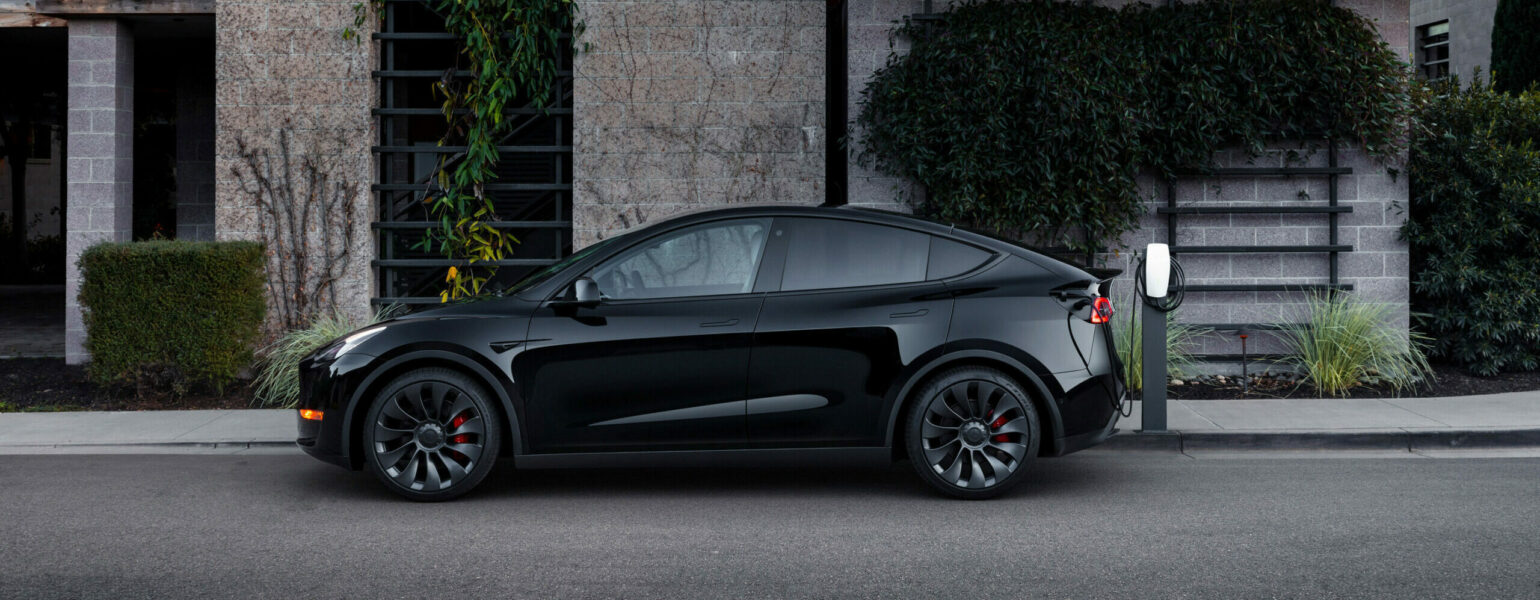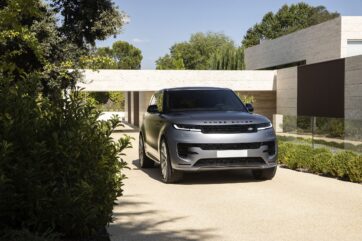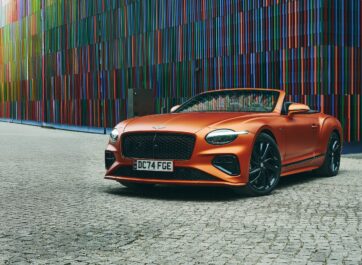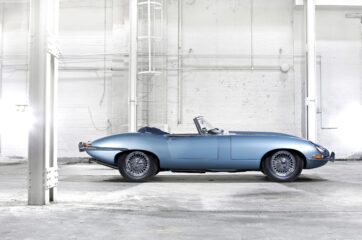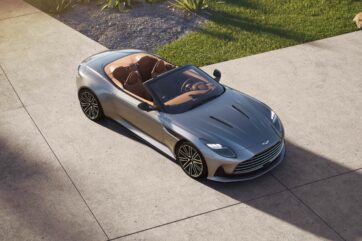
Cars Turning 40 in 2024 – Part 1
The term ‘classic car ownership’ used to portray hours spent in a garage covered in engine oil whilst trying to figure out where the part you are holding is meant to actually be fitted. It often involved a drive out in your pride and joy, only when the weather was nice to prevent the car rusting, but not too hot so the engine didn’t overheat. They were often a purchase of only those who knew their way around an engine bay and could quote the part numbers off the top of their head having had to order them so often.
The deciding factor these days for what is classed as a ‘classic’ car is a vehicle that was built 40 years ago or more and subsequently is no longer required to pay road tax or to undergo an annual MOT. It is then classed by the DVLA as a ‘historic vehicle’ and as such can be considered a classic and its collectable appeal is instantly assured. Or is it.
These days there are a number of vehicles which now fall into that category which seem like they were built much more recently than 1984. Cars that were either a common sight on UK roads, or seem to have aged so well in terms of looks that they seem a lot younger than they actually are. Part 2 takes a look at the more everyday cars that perhaps your parents owned when you were younger or may have been your first car when you passed your test all those years ago. Part 1 of our Surprising Classic Cars list meanwhile takes a look at those cars turning 40 years old this year that are considered more luxurious or sporty.
Ferrari Testarossa
If one car could symbolise automotive design in the mid 1980’s it would be the Ferrari Testarossa. From its comically wide looking rear end and long side strakes to its pop-up headlights, its styling and image defined the era and became an icon of its time. The 4.9-litre flat-12 engine produces 385bhp allowing for an impressive 0-62mph time of less than 6 seconds and was mid-mounted for better weight distribution. Its compactness also allowed for a lower centre of gravity, yet it is an inherently wide configuration, hence the width of the rear of the car.
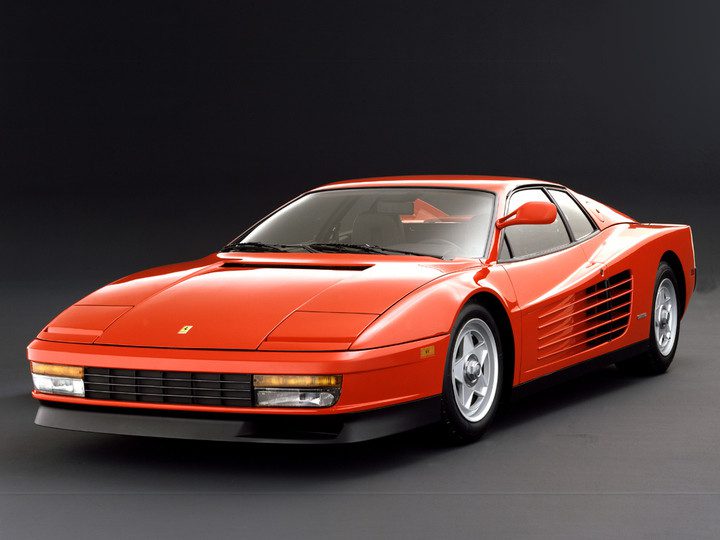
The styling may have looked over the top however it wasn’t just form over function. With a wider rear than front, the shape was incredibly aerodynamic, and the handling and stability were also much improved over previous models. The intakes fed cool air into the engine from the side, however the addition of the side strakes got around the new legislations forbidding large openings in the US. The model sold over 7,000 units and thanks to evolutions of the styling in the 512 TR and F512M continued on to 1996, by which point almost 10,000 examples sold, making it one of the most mass-produced cars in the brand’s history.
The Testarossa became a cultural icon thanks to its inclusion in Sega’s ‘Out Run’ video game as well as popular television shows such as Miami Vice. The latter was such a hit that Enzo Ferrari himself gifted Miami Vice star Don Johnson a brand-new Silver Testarossa as he was such a fan. Other notable owners include Elton John, Michael Jordan, Mike Tyson, MC Hammer, Rod Stewart and Ferrari F1 Driver Gerhard Berger.
Ford RS200
Such was the popularity of rallying in the mid-1980’s that manufacturers designed certain models specifically for the recently introduced power crazed ‘Group B’ category. However, with the rules requiring each manufacturer to create at least 200 road going versions of their competition cars, homologation special editions were common at the time. Ford’s most fearsome creation at this time was the purpose-built RS200.
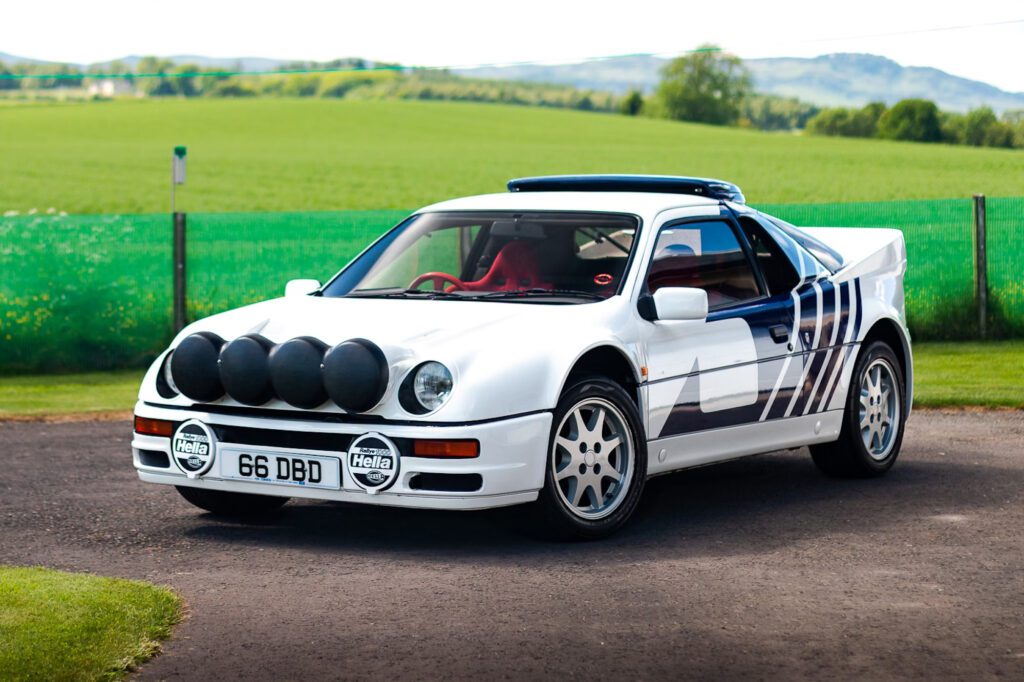
In order to create a competitive car to take on Audi and Peugeot the RS200 was designed with a mid-engine layout, four-wheel drive, lightweight plastic-fibreglass bodywork and a hugely powerful turbocharged engine. Despite the engine being just 1.8-litres in size, the road going version had 250bhp, with up to 450bhp for the racing version. Despite the ban on Group B rallying after a number of crashes and just a year of racing, a number of ‘Evolution’ models were produced with a larger 2.1-litre turbocharged engine offering an output of anywhere between 550bhp and over 800bhp.
The Ford RS200, despite not getting the chance to excel at what it was created for, remains one of the most iconic of the power-crazy Group B era rally cars. Its no-holds-barred Formula 1 inspired engineering and bespoke design are a symbol of the time when the rally world threw out the regulations and let manufacturers show what they could really do. With around 200 examples built for the road and prices in the hundreds of thousands, the RS200 is a real collector’s car that deserves its classic status.
Chevrolet Corvette C4
The Chevrolet Corvette has always been a staple of the American car scene since its introduction in the 1950’s, and in 1984 it became more modern and cleaner with its design. Clearly an evolution of the C3 ‘Stingray’ yet with more angular and cleaner lines, the C4 Corvette embraced the 80’s theme of technology to advance the model further than ever before. This was embodied no more than the digital dashboard with LCD instruments to the interior.
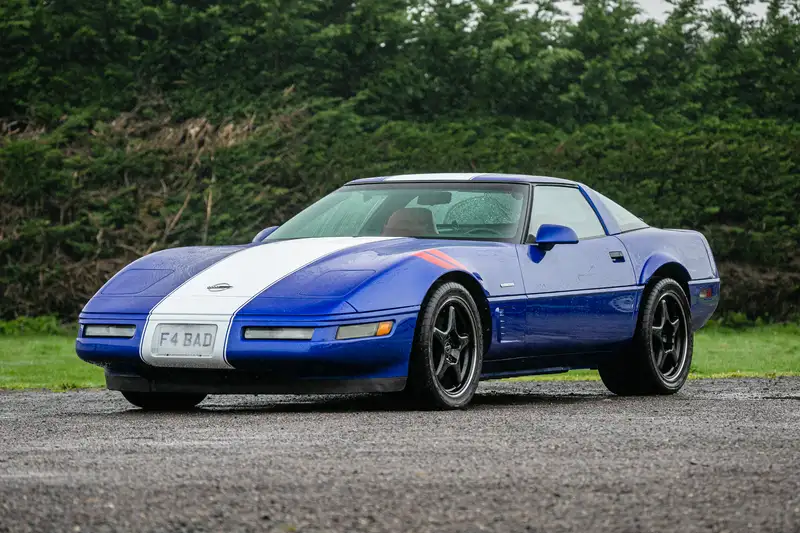
With an all-new chassis, it also focused more on handling and performance and offered lightweight suspension, wheels and braking system as well as moulded plastic bodywork in place of previous models’ fibreglass. One thing did remain though despite all the advancements, power came from a 5.7-litre V8 engine which despite its size meant that early C4’s had a relatively modest output of just 250bhp. By the time production ended in 1996, more than 350,000 C4 Corvette models were produced.
Ferrari 288 GTO
The ‘GTO’ is one of the most revered badges in performance car history. Reserved for the most extreme and most capable of Ferrari road cars, a GTO uses racing car knowhow and engineering to show what their road cars can really do. After Enzo Ferrari became worried about the ‘excessive gentrification’ of their road cars, the 288 GTO was introduced to take the brand back to their racing roots and produce a performance yardstick for their cars.
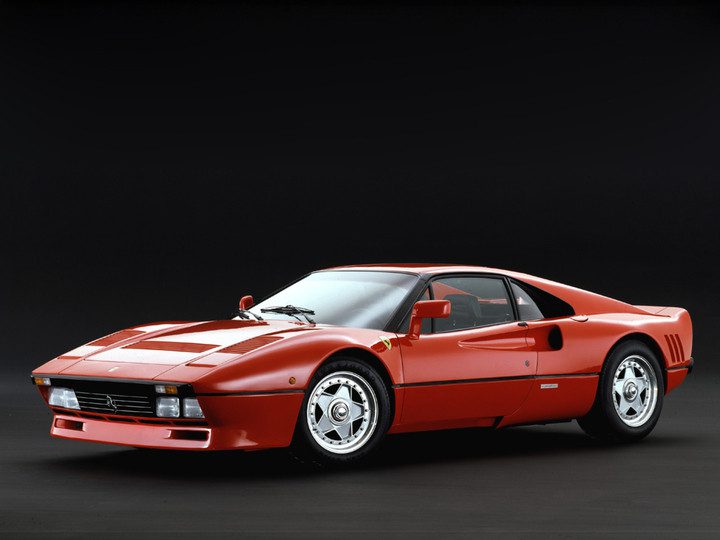
Born as a homologation of the existing 308 GTB, the GTO took the existing model to the next level with restyled composite body panels, increased power output, reduced weight and resulting in much improved performance. Whilst the engine size stayed the same at 2.9-litres, the addition of a turbocharger meant power output was just under 400bhp, over 50% more than the original car. Weight saving measures also meant that at around 1,160kg, the GTO saved over 250kg in mass too.
The increased power and reduced weight also meant that the model was one of the fastest production cars of its era, capable of accelerating from 0-62mph in just 5 seconds, 0-125mph in 15 seconds flat and with a top speed of almost 190mph. The GTO was built in limited numbers of just 272 cars with notable owners offered the chance to own one by Enzo Ferrari himself including Michele Alboreto, Keke Rosberg and Niki Lauda, who was gifted the last one in production, with Michael Schumacher also previously owning one.
Toyota MR2
The original Toyota MR2 was designed as a small, economical and sporty car and was Japan’s first rear mid-engined production car. Despite its relatively basic ethos it did bring a certain level of sophistication with a mid-mounted engine, fully independent suspension and four-wheel disc brakes. It also incorporates a lightweight construction, tipping the scales at a little over a tonne, and has suspension and handling engineered by Lotus.
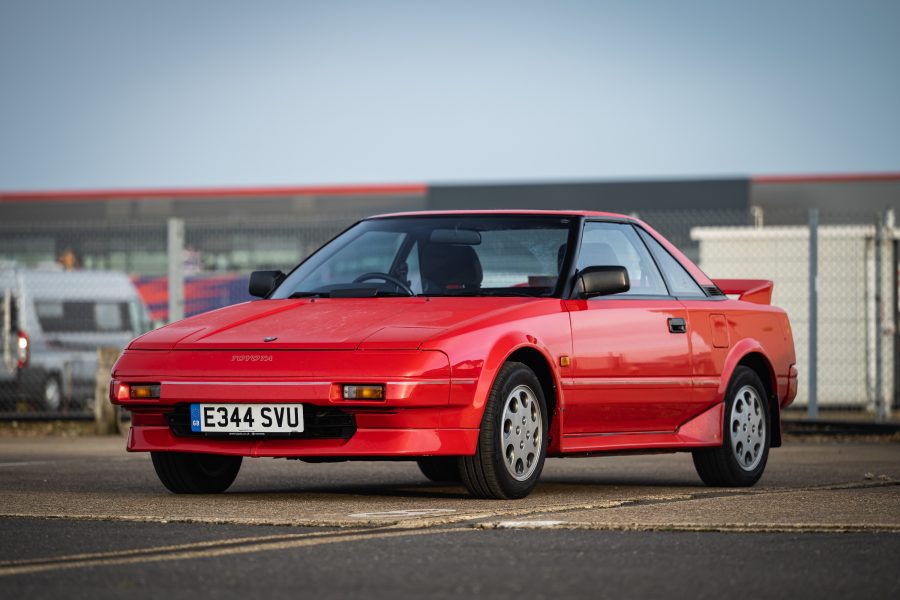
With small engine displacement, of either 1.5 or 1.6 litres, the MR2 produced around 120bhp but its relatively low weight meant performance was adequate and fuel economy remained strong. Road tests produced a 0-62mph time of around 8 seconds which was quicker than its main rival in the Fiat X1/9. The MR2 was critically acclaimed around the world featuring in top 10 lists for sports cars everywhere from the US to Australia, Europe and its home market of Japan. Now that the car is turning 40, the MR2 could easily be the cheapest way into classic sports car ownership.
Reliant Scimitar SS1
The Reliant Scimitar SS1 was Britain’s attempt at a similar format to the MR2, a small simple 2-seater sports car. With a chassis set up inspired by the Lotus Elan, the Scimitar had Ford 1.3 and 1.6 litre engines upon launch, independent suspension all round and rear wheel drive. The body panels were made of polyurethane or glass reinforced polyester to save weight but also designed to be removed easily to remain easy to repair or replace panels.
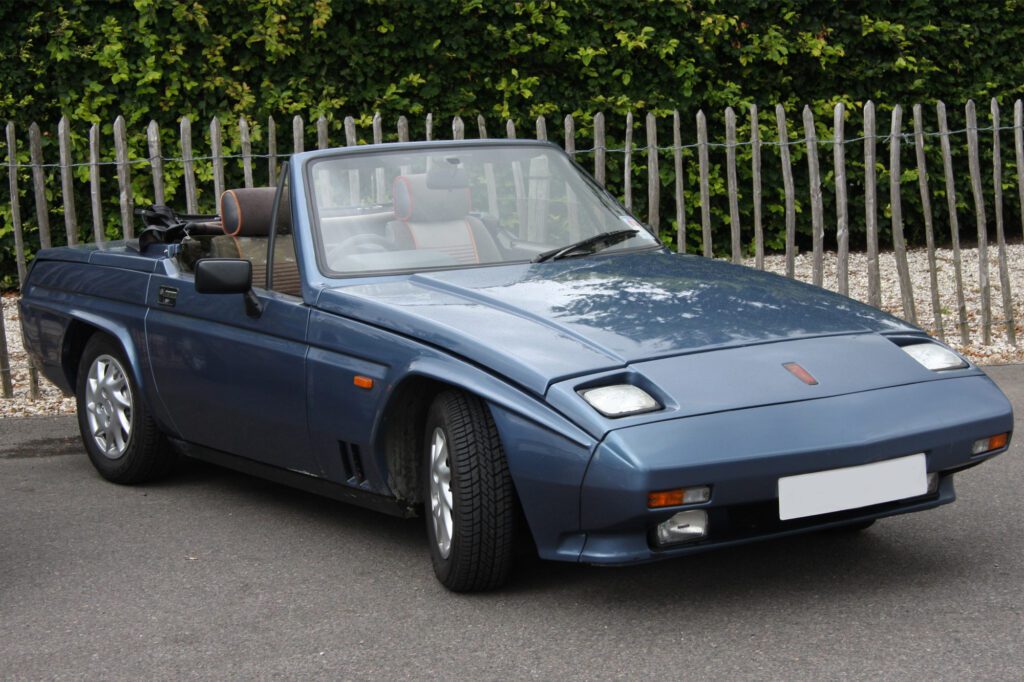
Styled in the popular wedge style of the era, the car had unusual, uncovered pop-up headlights, much like the Porsche 928. Power output was just under 100bhp from the 1.6-litre engine, with 0-62mph taking 9.6 seconds and the top speed was 110mph. Despite plans to produce 2,000 cars a year, just over 1,500 vehicles in total were made in 10 years of production.
Bentley Continental
For 1984 Bentley revived one of their most popular badges in the shape of the Continental. Originally a name given to their cars that had more powerful engines that their usual models, the Continental was the model to have for those looking for something faster with greater performance. In 1984 it was brought back to signify the Bentley version of the Rolls Royce Corniche, with more sporty precedence and styling to match.
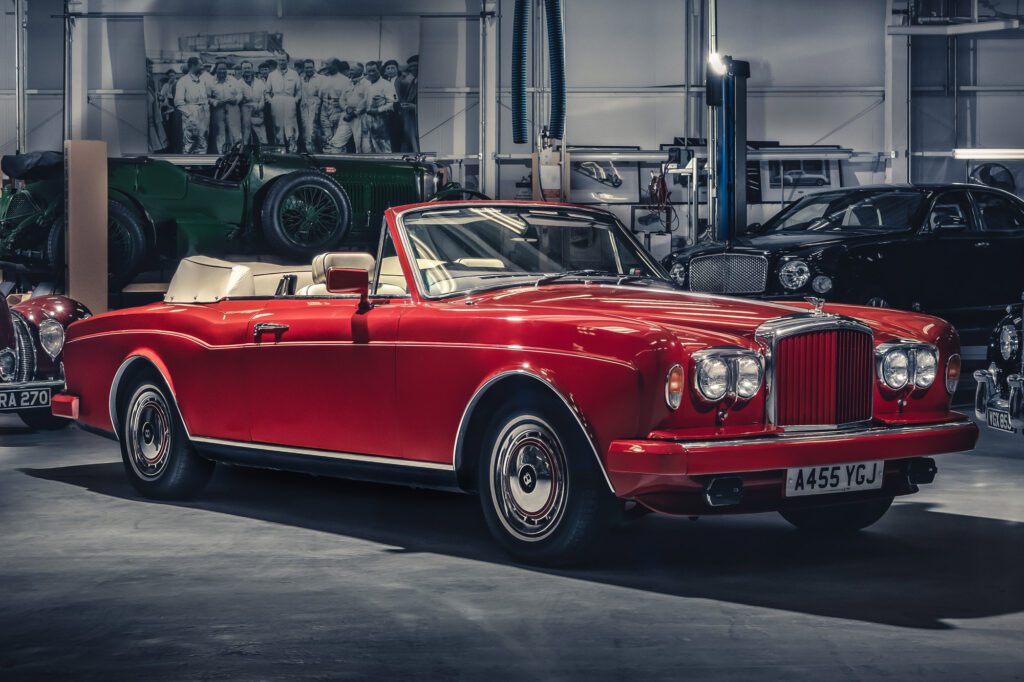
Whilst the Corniche was unmistakably Rolls Royce with lashings of chrome and elegant detailing, the Continental featured revised and colour-coded bumpers, a different interior including the dashboard and seats, and restyled rear-view mirrors. The sportier and performance orientated iteration of the ultimate luxury car had returned and was aimed at a different kind of client than the traditional Rolls Royce customer.
Renault Alpine GTA
The GTA was the first Alpine produced entirely by parent company Renault despite being affiliated with the brand for many years. It effectively updated the appearance of the previous model, the A310, with sharper lines, integrated bumpers and a larger rear glazed windshield. It also retained that cars’ rear engine layout and 2.9-litre V6 powerplant. The revised styling made the GTA one of the most aerodynamic cars of its time, as well as its polyester plastic and fibre glass body panels making it not just lighter but also quicker than rivals such as the Porsche 944.
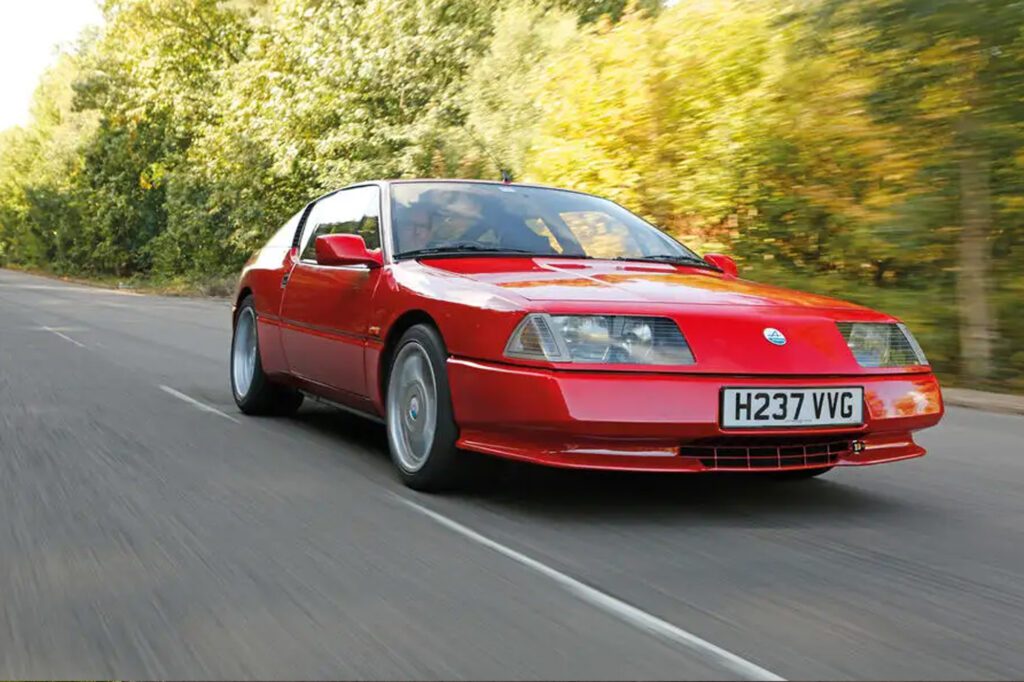
Despite its performance credentials and futuristic styling, the Renault brand meant that the Alpine struggled in the sports car marketplace and sales were not substantial. The introduction of a Turbo model boosted figures, as well as efforts to remove the Renault badging from cars, however it was never really a big selling model. Despite being on sale for just over 6 years, the average production figures were around 1,000 cars per year. The Renault Alpine GTA remains one of those cars that at the time didn’t really hit the heights they had hoped, however it might just make quite the collectable classic car after all due to its rarity and interesting take on a sports coupe.
Bentley 8
The Bentley 8 was the brand’s attempt to appeal to those with luxury car aspirations who couldn’t quite stretch to their existing Mulsanne model. With less equipment as well as cloth upholstery and steering wheel, even steel wheels and a wire-mesh grille instead of the usual vertical chrome slats, the 8 was their entry level offering and the cheapest way into the brand. It also featured firmer suspension for handling improvements.
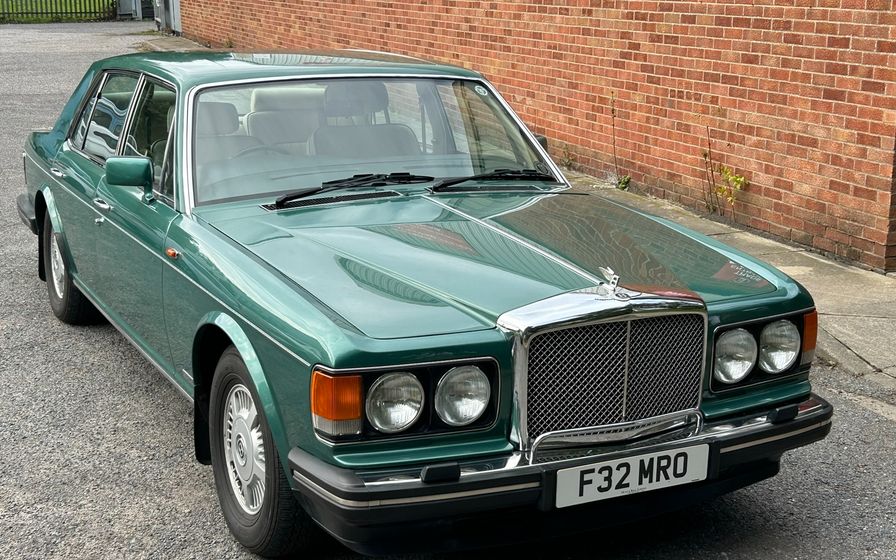
More importantly however, the reduction in equipment and finishes meant that the Bentley 8 could be offered at a base price of less than £50,000, a much-improved psychological difference to the Mulsanne that cost £6,000 more at the time. This meant that the 8 was available to a new range of customers that desired the prestige that the brand came with, and strong UK sales figures meant that sales expanded to Europe and the US. In its 8 years of production, the brand sold over 1,700 vehicles such was the success of their new ‘budget’ Bentley.
TVR 390 SE
Based on the existing 350i, the 390 SE enhanced the styling and offered performance upgrades to create a more powerful and faster variant. In fact, when it was released in 1984 it was the most powerful of all the famous ‘wedge’ TVR’s yet. Despite creating an all-new model, the 390 SE was never actually approved as a stand-alone model, so technically as just a 350i with special upgrades.
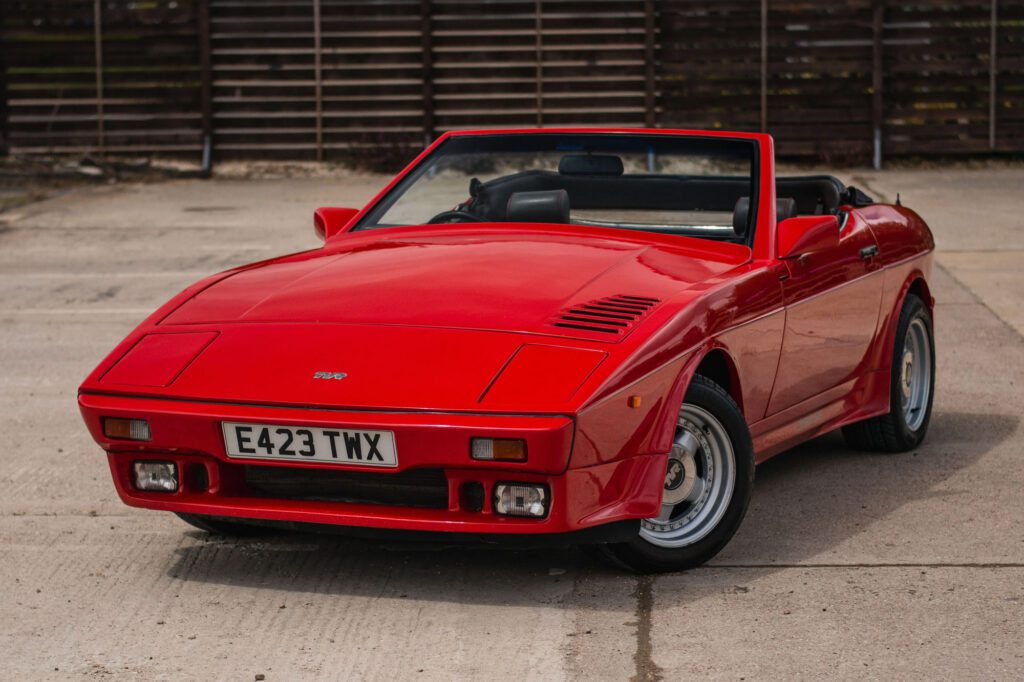
Power was increased to 275bhp thanks to an increased capacity 3.9-litre Rover V8 engine developed with Rover tuning specialist Andy Rouse, as well as the addition of Cosworth developed engine components. It also received a stronger clutch and wider tyres to deal with the extra power. With a deeper front air dam to the bumper, a rear underbody spoiler, flared wheel arches and wider sills meant that the 390 SE looked more aggressive than the 350i too. Just over 100 models were built meaning that the 390 SE is a rare classic car indeed.
Take a look at Part 2 of our Cars Turning 40 in 2024.
Classic Car Finance
If you are looking at purchasing your first classic car or your 100th, our expert team have over 18 years of experience in sourcing tailored car finance products, including the models mentioned above. Whatever type of car you’re looking for, you can get in touch with us either by calling 0800 012 6666 or clicking here.
With over 2,200 Trustpilot reviews, having funded over £1.9 billion and counting, and four-time consecutive award winners of the Best Specialist Car Finance Provider award from 2020 through to 2023, you too can find out why thousands of people trust us time and time again to find a smarter, tailored funding solution when looking for your next dream car.
Make sure you follow us on Instagram, LinkedIn and Facebook to keep up to date with what’s happening in the market and to see some stunning photos and videos of the amazing cars we fund.
